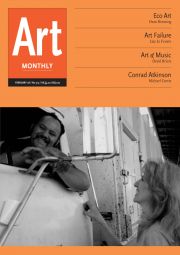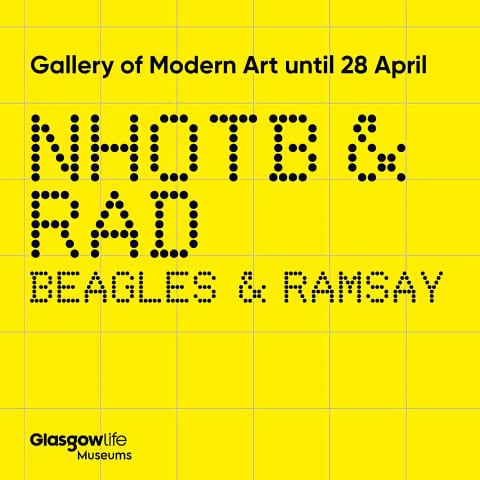Opinion
Art and Theatre
Julian Maynard Smith on Tate Modern’s ‘The World as a Stage’
It seems that theatre holds quite a few problems for some in the visual arts. One imagines for them it operates under a set of conditions and materials stuck in the 19th century – a single viewpoint, a passive audience (who merely need to be given good sightlines and acoustics), a bunch of outmoded illusionistic conventions of representation. Add some uninflected notions of character and plot and the result is a horror show for all well-thinking contemporary art folk.
They see the theatre world populated by people who prefer their plays to have a subject, to be told stories of social and political relations, rather than have it experiment with the forms of information, with human perception, cognition, memory, ontology. And indeed when some theatre does present a spectacle of radical social comment, it is jammed into just such a preposterous old slop-bucket of staged implausibility.
‘The World As a Stage’ (see AM312) appeared to adopt this limited understanding of what theatre is. It seemed clear that most of the artists represented actually hate it, while some showed work that had little relation to theatre and appeared to have been hijacked to fit the curatorial remit. Unable to deal with the action that lies at the heart of theatrical reality, the majority had taken the dry husks of theatrical apparatus and conventions and isolated them, and then imagined a story for them in justification.
The resulting objects are bewildering in their ineffectiveness. Curtains, lights and seating banks were installed, supposedly to create tensions about the relation of the audience to stage. Props were presented as evidence of performativity. Action was frozen (with video of motionless performers, or still photographs of moving ones) to remind us of time and memory. The image of the artist was used to remind us the scene is not real. Strategies which have been used coherently in the past history of performance and video were here lazily applied to a hazy notion of ‘theatricality’, and consequently looked desperately second-hand.
It is hard to express how awful this show was. It comprised inert and trivial objects which did nothing – as one might suspect from the pretentious nonsense that described them in the guide. The curators’ intention to capture theatre was misplaced because the subject is illusory. This was a Pollock’s Toy Theatre of a show, made by people for whom real time and change and human beings are threats to their practice.
‘The World as a Stage’ was an attempt to examine the act of performance by presenting topologies that omit what performance does. In the process, the arrow of time and its paradoxes, along with the associated problems of cause and effect, and their dark companions chaos and uncertainty, had disappeared. A feeling persists that visual artists consider themselves the revolutionaries fighting the bourgeois complacencies of the performing arts, but these revolutionaries are extraordinarily passive and dull.
In practice, theatre could not present a more different site for an artist to research than the hackneyed one displayed here. Within contemporary theatre one can experience a variety of forms of public connection: environmental immersion, one-to-one performance, mediated performance, performance from film, internet performance, absent and multi-present performance, site-specific theatre, interactive theatre, what you might call 2.0 theatre, embedded and invisible theatre, and performance that draws on dance, magic, cabaret, slapstick and dangerous acts.
In staged performance the use of action, gesture, text and speech as materials for sculpture as an equal to the conventional materials of inanimate matter is hardly new. The development of this sculpture into work that acknowledges its temporal requirements – the engagement of an audience primary among them – is an ongoing project. It may be allied to gallery practice but can also be taken as an independent practice, and it is only really as that that it avoids the fate of being a minor and subsidiary art form.
The area between or shared by art and theatre is uncertain, provisional, confusing and messy. Prejudices exist on both sides that mean this area remains in the dark, and the respective economic structures have driven their practices so far apart that there is little possibility of exploring the common ground without some risks being taken.
This show might have explored the active area between art and theatre, and found the resources to present it. The gallery show was open for ten weeks, and in that time, apart from a slight Tino Sehgal piece at the entrance, presented a few, one-off live events. Limiting a performance to a single showing fails its duty to the public, as well as seeming to support the absurd idea that a performance is a single artefact to be consigned to instant history and definitive documentation. The practice of thinking of a performance as an unrepeated event has also had the effect of producing a slurry of terrible pieces whose terribleness is locked into a system that repeats the production of new terrible pieces. A piece is often proved and improved by repeated exposure. Theatre of course relishes the variations of daily performances and the building of an audience.
The economics works against it. Performance can be expensive. Performance as a practice in itself, rather than an adjunct designed to lend sexiness to an exhibition of objects, is human resource-heavy, and human beings are expensive. It is a pity if the only strategy available is zero-budget like Tino Seghal’s. Theatre at least realises that human materials need time, warmth and space in which to mature into works of art. The area this show addresses is precisely that which is engaged with time, and uses time in its making. Rehearsal is studio time, but with many bodies that need feeding, and who will not benefit from the sale of any object. The art world has preferred to imagine performance as instant coffee, not needing practical preparation or skilful execution.
Much of this work was actually stuck further in the past than much contemporary theatre practice. Some of it was neurotically self-referential and uninterested in the real world too. Theatre, by being a public meeting of ideas, aesthetics, proposition, reception and reflection, inevitably has a political dimension which could and should have been recognised here. By the time these still young artists realise this, the danger is that a new generation will be taking their place in the tired production of tat for the art markets.
The World as a Stage was at Tate Modern, 24 October 2007 to 1 January 2008.
Julian Maynard Smith is the artistic director of Station House Opera.
First published in Art Monthly 313: February 2008.










